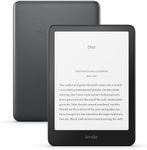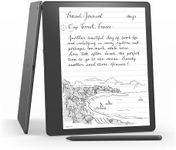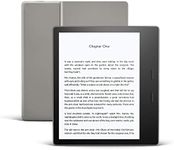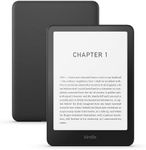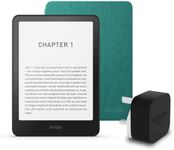Buying Guide for the Best Kindles
Choosing the right Kindle can greatly enhance your reading experience. When selecting a Kindle, it's important to consider how you plan to use it, where you'll be reading, and what features are most important to you. By understanding the key specifications and how they align with your needs, you can make an informed decision that will provide you with the best reading experience possible.Screen SizeScreen size refers to the diagonal measurement of the Kindle's display. This spec is important because it affects how much text fits on the screen and how portable the device is. Smaller screens (around 6 inches) are more compact and easier to carry around, making them ideal for on-the-go reading. Larger screens (7 inches and above) provide more space for text and are better for reading at home or for those who prefer larger text. Choose a screen size based on where you plan to read most often and your preference for text size.
Screen ResolutionScreen resolution indicates the sharpness and clarity of the text on the Kindle's display, measured in pixels per inch (PPI). Higher resolution screens (300 PPI) offer crisper and clearer text, which can reduce eye strain and make reading more enjoyable, especially for long periods. Lower resolution screens (167 PPI) are still readable but may not be as sharp. If you read a lot or have sensitive eyes, a higher resolution screen is a better choice.
Storage CapacityStorage capacity determines how many books, audiobooks, and other content you can store on your Kindle. Kindles typically come with storage options ranging from 8GB to 32GB. If you primarily read text-based books, 8GB is usually sufficient, as eBooks take up very little space. However, if you plan to store a large library, including audiobooks and graphic-heavy content like comics or PDFs, you might prefer a model with more storage. Consider your reading habits and the types of content you consume when choosing storage capacity.
Battery LifeBattery life refers to how long the Kindle can operate on a single charge. This is important for convenience, especially if you read frequently or travel often. Most Kindles offer weeks of battery life, but the exact duration can vary based on usage and settings. If you read a lot or don't want to charge your device frequently, look for a Kindle with longer battery life. Keep in mind that features like backlighting and Wi-Fi usage can affect battery performance.
BacklightingBacklighting allows you to read in low-light conditions by illuminating the screen. This feature is important if you like to read at night or in dimly lit environments. Some Kindles offer adjustable backlighting, which lets you customize the brightness to your preference. If you often read in various lighting conditions, a Kindle with backlighting is a good choice. For those who primarily read in well-lit areas, backlighting may be less critical.
Water ResistanceWater resistance protects your Kindle from accidental splashes, spills, and even submersion in water. This feature is important if you plan to read near water, such as at the beach, pool, or in the bath. Water-resistant Kindles are designed to withstand exposure to water, providing peace of mind and durability. If you often read in environments where your device might get wet, consider a water-resistant model. For indoor or dry use, this feature may be less necessary.
ConnectivityConnectivity options for Kindles include Wi-Fi and cellular. Wi-Fi-only models require a wireless network to download books and access online features, while cellular models can connect to the internet anywhere there's a cellular signal. This spec is important for convenience and accessibility. If you frequently travel or don't always have access to Wi-Fi, a cellular model might be more suitable. For those who primarily read at home or in places with reliable Wi-Fi, a Wi-Fi-only model is usually sufficient.

